Cactus Dahlias: Care Guide for Flower
Cactus Dahlias are truly stunning flowers that stand out with their spiky, intricate petals and vibrant colors. These striking flowers come in a variety of hues, from bold reds and yellows to soft pinks and whites, making them a popular choice for gardeners and floral designers alike. The unique shape of their petals, which resemble cactus spines, adds a touch of exotic charm to any space. Whether used in bouquets, garden beds, or as a focal point in floral displays, cactus dahlias bring texture and a vibrant energy to their surroundings. These hardy plants are also known for their long-lasting blooms, which provide continuous beauty throughout the summer and into the fall. If you’re looking to add a dynamic, colorful touch to your garden or home, cactus dahlias are the perfect choice. In this care guide, we’ll explore how to plant, grow, and maintain cactus dahlias to ensure they thrive and bloom beautifully season after season. Our gardening blog is a perfect place to find all the information you need!
Why Choose Cactus Dahlias for Your Garden or Home?
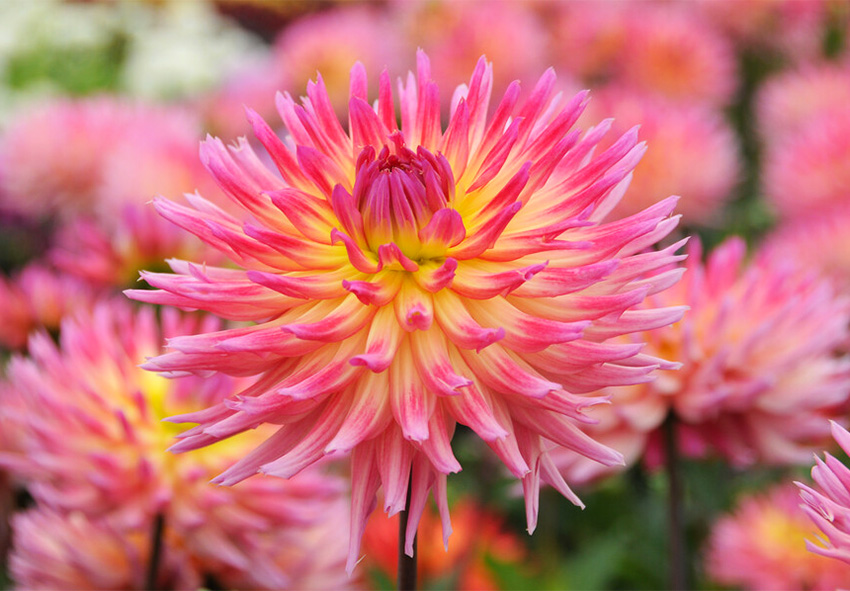
Cactus Dahlias are beloved for their striking appearance and numerous benefits in both the garden and floral arrangements. One of the standout features of these dahlias is their eye-catching, spiky petals, which create a dynamic and textured look. They come in a wide range of vibrant colors, such as deep reds, yellows, oranges, and pinks, making them a versatile addition to any garden or floral display. The long-lasting blooms of cactus dahlias can stay vibrant for weeks, providing continuous color from mid-summer to fall. This makes them a perfect choice for gardeners looking for flowers that provide sustained beauty throughout the season.
In addition to their visual appeal, cactus dahlias are highly adaptable and can be grown in various settings, from flower beds to container gardens. Their ability to attract pollinators, like bees and butterflies, adds to their garden-friendly nature. Moreover, cactus dahlias make excellent cut flowers, with their sturdy stems and long-lasting blooms making them a popular choice for flower arrangements. Whether you’re a seasoned gardener or just starting out, cactus dahlias offer an easy way to add color, texture, and life to any garden or home setting.
The Most Popular Cactus Dahlias Varieties and Their Characteristics
Cactus Dahlias come in a wide variety of types, each with its own unique characteristics, making them ideal for different gardening preferences and floral arrangements. Some of the most popular varieties include ‘Café au Lait,’ a creamy, soft beige dahlia that adds an elegant touch to any garden. Its large, plush blooms are a favorite among wedding florists. Another well-known variety is ‘Bodacious,’ which features vibrant, fiery orange-red petals that create a bold, dramatic statement in gardens or as a cut flower.
For those looking for something more striking, ‘Totally Tangerine’ is a brilliant orange cactus dahlia that bursts with color, while ‘Ken’s Choice’ presents a deep red hue, offering a classic and timeless appearance. Each variety has its own distinct color palette and bloom size, with some offering smaller, more compact flowers, while others produce larger, more voluminous blooms. Cactus dahlias thrive in full sun and well-draining soil, and they can be used as stunning focal points in flower beds, borders, or containers. These dahlias are also excellent as cut flowers, often seen in floral arrangements due to their long-lasting blooms and vibrant appearance.
Classic Red and Burgundy Cactus Dahlias
Red and burgundy cactus dahlias are perfect for creating bold, dramatic focal points in any garden or floral arrangement. Their deep, rich hues add a sense of sophistication and elegance to any space. These varieties tend to be large, with spiky petals that lend an exotic, textured appearance. Some of the most popular red and burgundy cactus dahlias include:
- ‘Chat Noir’ – This stunning variety features dark, velvety red petals with a nearly black undertone, creating a dramatic effect in any garden or floral arrangement.
- ‘Black Narcissus’ – Known for its deep burgundy-red blooms, this variety exudes elegance and pairs beautifully with lighter-colored flowers for contrast.
These red and burgundy dahlias are perfect for gardeners who want to add a touch of drama and timeless beauty. Whether you plant them as the focal point in a garden or use them as show-stopping cut flowers, they’re sure to make a bold statement.
Bright Yellow and Orange Cactus Dahlias for a Warm Garden
If you’re looking to add a vibrant splash of color to your garden, bright yellow and orange cactus dahlias are an excellent choice. Their radiant, warm colors bring energy and warmth to any space, creating a cheerful and inviting atmosphere. Here are some popular yellow and orange varieties:
- ‘Tahiti Sunrise’ – A beautiful blend of yellow and orange with spiky petals, this variety creates a sunny, vibrant addition to any garden.
- ‘Fringed Star’ – Known for its intense, fiery orange blooms, this dahlia has a frilled petal structure that adds texture and drama.
These varieties are perfect for adding a burst of color to borders, flower beds, or containers. They also look stunning in bouquets and floral arrangements, making them a versatile choice for any gardener looking to brighten their garden with warm, radiant hues.
Soft Pink and Pastel Cactus Dahlias for a Delicate Look
Soft pink and pastel cactus dahlias bring a delicate, romantic touch to your garden or floral designs. Their light, airy colors evoke a sense of calm and serenity, making them ideal for creating a tranquil atmosphere. These dahlias can complement other flowers beautifully and provide subtle elegance to any space. Some popular pastel-hued varieties include:
- ‘Pink Jupiter’ – This soft pink variety features long, spiky petals that make it a striking addition to any garden or floral arrangement.
- ‘Soft Sunset’ – A pale peachy-pink variety with subtle shading, creating a soft and understated elegance.
These varieties are perfect for gardens looking for a gentler color palette, and they are often used in wedding arrangements, offering a soft and romantic touch. The light, pastel tones of these dahlias combine well with other flowers, creating a harmonious, visually pleasing garden setting.
Exotic and Bi-Colored Cactus Dahlias
Exotic and bi-colored cactus dahlias offer unique, one-of-a-kind blooms that truly stand out in any garden or floral arrangement. Their unusual color patterns and striking petals give them an exotic flair that appeals to gardeners looking for something distinctive. Some of the most exotic and bi-colored varieties include:
- ‘Mick’s Peppermint’ – This variety features a stunning combination of white and red petals with a speckled pattern, creating an eye-catching and dynamic display.
- ‘Karma Sangria’ – A beautiful blend of rich reds and purples, ‘Karma Sangria’ offers a vibrant contrast and a luxurious feel.
These dahlias are perfect for adding an exotic touch to gardens, especially when planted in borders or as focal points. Their bold colors and unusual petal shapes also make them a popular choice for cutting and incorporating into floral arrangements, offering a striking, vibrant display. Whether in your garden or as part of an arrangement, exotic and bi-colored dahlias are sure to impress.
How to Plant and Grow Cactus Dahlias Successfully
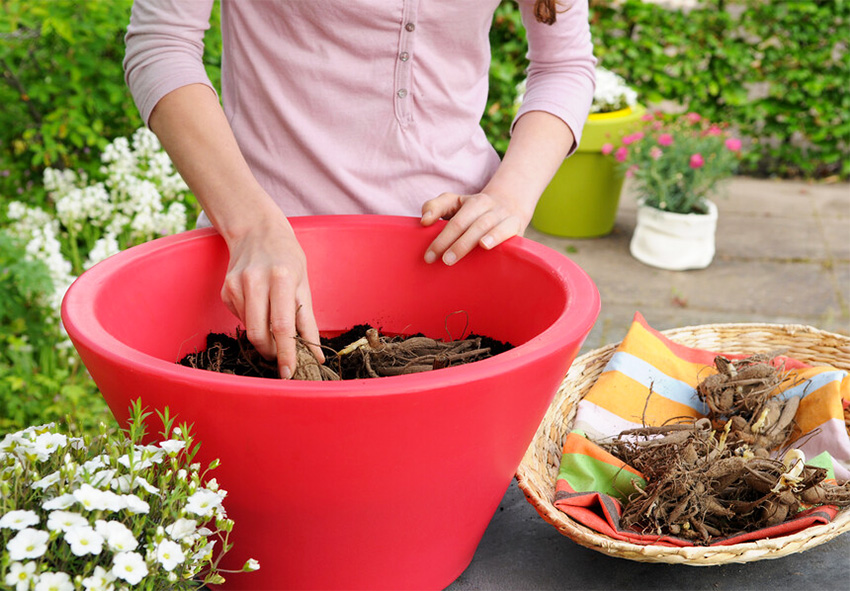
Cactus dahlias are known for their dramatic, spiky flowers that add texture and vibrancy to any garden. To successfully plant and grow them, begin by selecting healthy, firm tubers with visible growth eyes. Plant these tubers in well-draining, fertile soil with a slightly acidic to neutral pH, ideally between 6.5 and 7.0. Choose a sunny location that receives at least six to eight hours of sunlight each day, as cactus dahlias thrive in full sun and need it to grow tall and strong.
Plant the tubers 4-6 inches deep, ensuring the growth points are facing upward. Space each tuber 18-24 inches apart to allow for proper air circulation and prevent overcrowding. Water the tubers lightly after planting and keep the soil consistently moist but well-drained. Once the dahlias begin to sprout, gradually increase watering to maintain an even level of moisture throughout the growing season.
As the plants grow, protect young shoots from late frosts and harsh winds. Mulching around the base will help retain moisture, regulate temperature, and protect the roots from frost. With the right cactus dahlia bulb care, these plants will flourish, producing stunning flowers that brighten up your garden and make for perfect floral arrangements.
Step-by-Step Guide to Planting Cactus Dahlias
Planting cactus dahlias involves selecting healthy tubers, providing them with the right soil and location, and ensuring proper care during the growing season. By following the correct planting process and taking steps to care for the dahlias as they grow, you can enjoy vibrant blooms throughout the season.
Step 1: Choosing Healthy Cactus Dahlia Tubers
The first step in successfully growing cactus dahlias is selecting healthy tubers. When choosing tubers, look for firm, plump ones with visible eyes, which are the small growth points where new shoots will emerge. Healthy tubers should feel solid to the touch and free from soft spots or mold.
Avoid tubers that appear shriveled, soft, or have visible signs of rot, as they may not establish well in the soil. Tubers that are too small or have no visible eyes may struggle to sprout or produce fewer blooms. If the tubers are not already sprouting, allow them to sprout indoors before planting them outside to give them a head start. Ensuring you select the right tubers will give your cactus dahlias the best chance at growing strong and vibrant plants.
Step 2: Choosing the Right Soil and Location
Cactus dahlias thrive in fertile, well-drained soil. The soil should have a slightly acidic to neutral pH, ranging from 6.5 to 7.0, which supports healthy root development. When selecting a planting location, choose a spot that receives full sun, as these flowers need at least 6-8 hours of direct sunlight daily for optimal growth and blooming. A sunny location will encourage strong stems and vibrant colors.
Good air circulation is also important to prevent fungal diseases, so avoid planting in overly crowded or shaded areas. The soil should be loose and well-draining to prevent water from pooling around the roots, as cactus dahlias do not like “wet feet.” If your soil is heavy or clay-like, amend it with organic matter like compost to improve drainage. Proper soil preparation and choosing the right spot will ensure your cactus dahlias have the best environment for growth.
Step 3: Proper Planting Depth and Spacing
When planting cactus dahlia tubers, the correct planting depth and spacing are crucial for their healthy growth. Plant the tubers 4-6 inches deep, with the eyes (growth points) facing upward. If you plant the tubers too deep, they may struggle to emerge, whereas planting them too shallow could leave them exposed to harsh weather and pests. Proper spacing is also important to give each plant enough room to grow and bloom without overcrowding.
Space the tubers 18-24 inches apart, allowing for good air circulation and minimizing competition for nutrients. This will also help reduce the risk of diseases that can spread in tightly packed plants. After planting, cover the tubers with soil, gently firm it down, and water lightly. Proper planting depth and spacing will allow your cactus dahlias to develop strong roots and healthy, abundant blooms.
Step 4: Watering After Planting
After planting cactus dahlias, it’s essential to water them correctly to encourage healthy growth. Water the tubers lightly immediately after planting to help settle the soil around them. Be sure the soil is moist but not soggy, as excessive moisture can lead to tuber rot. Once the leaves start to emerge, gradually increase the watering to keep the soil consistently moist, but always ensure the soil drains well to prevent water from accumulating around the roots.
Cactus dahlias prefer soil that is evenly moist throughout the growing season, especially during their active growth phase. Water deeply but infrequently, allowing the top layer of soil to dry out between waterings. This will encourage deep root growth. Avoid watering the foliage directly, as this can cause fungal issues. A steady watering routine is crucial for maintaining healthy, vibrant cactus dahlias throughout the growing season.
Step 5: Providing the Right Growing Conditions
Once your cactus dahlias are planted, providing the right growing conditions is essential for their success. These plants are sensitive to extreme weather, so protecting young shoots from late frosts and strong winds is important. If a late frost threatens, cover the plants with a frost cloth or burlap to protect the emerging shoots. Cactus dahlias also benefit from being sheltered from harsh winds, which can damage their tall stems.
Use mulch around the base of the plants to help retain moisture, regulate soil temperature, and prevent weed growth. The mulch layer also helps keep the soil from drying out during hot weather. Additionally, applying a layer of mulch in colder climates can offer extra protection against frost. Keeping an eye on the weather and providing these protective measures will give your cactus dahlias the best chance of thriving and blooming beautifully.
Essential Cactus Dahlia Care Tips for Healthy Growth
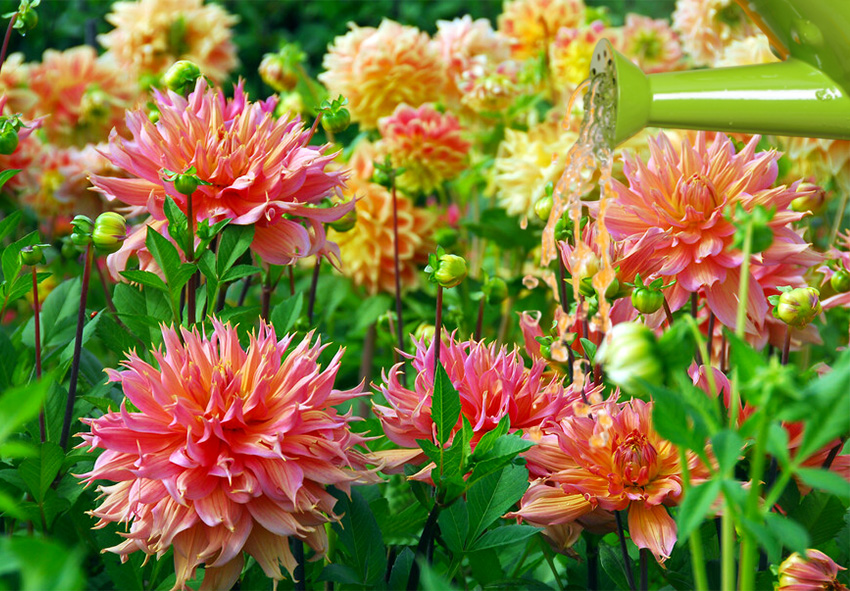
Caring for cactus dahlias requires careful attention to their specific needs in terms of light, water, temperature, and feeding. These striking plants, with their vibrant, spiky petals, are popular for their ability to add texture and bold color to gardens and floral arrangements. By providing your cactus dahlias with the right conditions, you can ensure they grow tall, bloom prolifically, and last throughout the growing season.
Regular watering, appropriate fertilization, and ensuring proper sunlight exposure are essential to keep these plants healthy and vibrant. Additionally, providing support for taller varieties helps maintain their shape and structure, preventing them from toppling over under the weight of their large flowers.
Whether you’re a novice gardener or someone experienced in cultivating dahlias, following these essential care tips will guarantee that your cactus dahlias flourish, creating a beautiful, long-lasting display in your garden.
How to Care for Cactus Dahlias After Planting
It’s important to know how to care for cactus dahlias in the garden just as learn how to care for cactus dahlias indoors. After planting your cactus dahlias, the next step is to provide them with the necessary care to support strong growth and abundant blooms. Regular attention to watering, fertilizing, and providing enough sunlight are critical to their success. The plants also need space to grow freely, so ensure proper spacing between each plant to promote air circulation. Cactus dahlias may also need extra support, especially as they begin to grow taller. Without support, their heavy blooms can cause the stems to break or bend. Overall, this phase of care focuses on ensuring the plant has everything it needs to develop into a healthy, flowering dahlia that will provide vibrant blooms all season long.
Step 1: Watering Cactus Dahlias the Right Way
Watering cactus dahlias properly is crucial for ensuring they stay healthy and produce strong blooms. These plants require deep watering 2-3 times per week, especially during dry weather. Deep watering encourages the roots to grow deeper into the soil, making the plant more drought-resistant and encouraging robust root systems. However, it’s equally important not to overwater, as dahlias are prone to root rot in soggy soil. Always check the soil moisture before watering, and ensure the soil drains well to prevent water from accumulating around the roots.
You should avoid watering the foliage, as this can promote fungal diseases like powdery mildew. Instead, focus on watering the soil at the base of the plant, which keeps the foliage dry and promotes better air circulation. Regularly monitor the soil to ensure it is consistently moist but not soaking wet. Once the plant has established itself and begins to bloom, continue to water deeply but be mindful not to let the soil become too waterlogged. With consistent and appropriate watering, cactus dahlias will flourish, producing large, vibrant flowers throughout the season.
Step 2: Fertilizing for Strong Growth
Fertilizing cactus dahlias correctly is essential to support strong growth, vibrant blooms, and overall plant health. During the growing season, it’s important to provide the right nutrients. Apply a low-nitrogen fertilizer, such as a 5-10-10 formulation, every 3-4 weeks. This type of fertilizer is ideal because it encourages the plants to develop strong roots and a healthy flowering structure without promoting excess leaf growth. Too much nitrogen can result in excessive foliage growth, which takes away energy from bloom production.
Starting fertilization in the early spring, once the growing season begins, is ideal. However, it’s important to stop fertilizing once the flowers start blooming. At this point, the plant is focusing on bloom production, and fertilizing further can disrupt this natural cycle. Additionally, avoid applying fertilizer too late in the growing season as this can interfere with the tubers’ ability to prepare for dormancy. Regular fertilization throughout the growing season will ensure that your cactus dahlias have the nutrients they need to thrive and produce beautiful, eye-catching blooms.
Step 3: Providing Proper Light and Temperature
Cactus dahlias require plenty of sunlight to thrive, with at least 6 hours of full sun per day being ideal. Sunlight is essential for photosynthesis, which is crucial for healthy plant growth and vibrant flower production. When choosing a location for your cactus dahlias, select a spot with ample sunlight, ideally in an area that receives full sun throughout the day. If you live in a particularly hot region, some light afternoon shade may be beneficial to protect the plants from intense heat, which can lead to sunburn or stress.
In terms of temperature, cactus dahlias grow best in warm conditions, with optimal temperatures ranging between 18-24°C (65-75°F). They are relatively heat-tolerant but can become stressed in extremely high temperatures, particularly if the humidity is also high. It’s important to maintain consistent temperatures for cactus dahlias, as fluctuations can cause damage to the flowers. In colder climates, you may need to take extra precautions to protect your dahlias from frost, which can kill the plant and affect future blooms. A location with good air circulation is also crucial to prevent the buildup of moisture around the plant, which could lead to fungal issues.
Step 4: Supporting Tall Cactus Dahlias
Cactus dahlias can grow quite tall, and their large, heavy blooms can cause them to bend or fall over if not properly supported. Using stakes or plant supports is crucial for preventing structural damage to the plant and ensuring it grows upright. It’s best to provide support before the flowers start to open, as this will keep the plant sturdy and allow it to stand tall, showing off its vibrant blooms. For taller varieties, using a plant cage or stakes is the most effective way to give the plant the support it needs.
As the plant grows, gently tie the stems to the supports to prevent them from leaning or falling. Pinching back the early growth of your cactus dahlias can also help them grow bushier, providing a more stable plant structure. This will reduce the likelihood of tall, leggy stems that may be prone to bending or breaking. With proper support, your cactus dahlias will remain healthy and upright, allowing their dramatic blooms to shine all season long.
How to Encourage Your Cactus Dahlias to Bloom Again
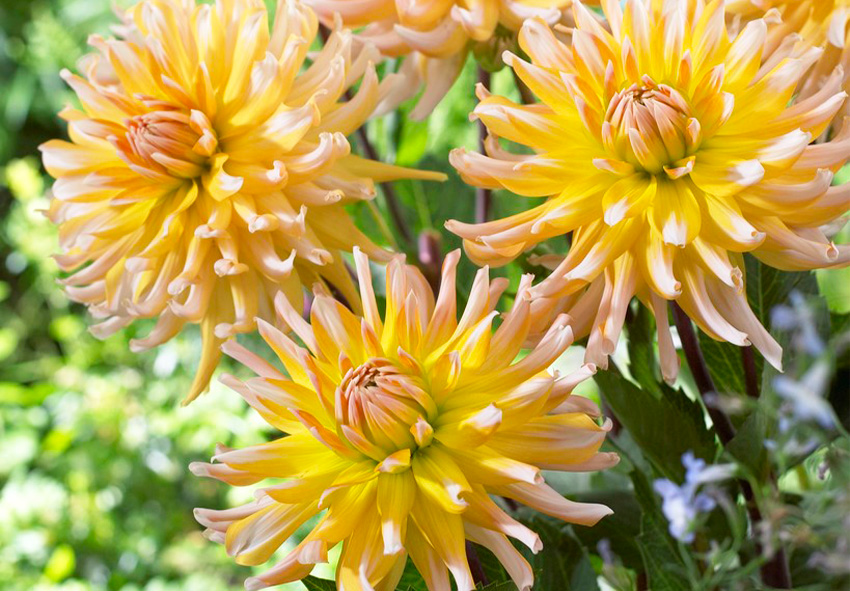
Cactus dahlias may not rebloom due to various factors such as improper care, pests, or environmental stress. They typically bloom from mid-summer until fall, but if they fail to produce flowers again, it can be due to a lack of nutrients, inadequate sunlight, or improper pruning.
Ensuring that your dahlia is properly cared for can help encourage repeated flowering. Providing the right growing conditions, maintaining healthy tubers, and using techniques like deadheading or dividing will help the plant thrive and continue blooming throughout the season.
In some cases, improving the plant’s environment or even replanting can rejuvenate the dahlia, ensuring more vibrant, repeated blooms in future seasons. By following a few simple steps, you can help your cactus dahlias rebloom and enjoy their colorful and spiky petals for a longer period.
Step-by-Step Guide to Ensuring Reblooming
To ensure your cactus dahlias rebloom, follow these essential steps: deadheading faded blooms, providing proper winter care, and dividing and transplanting the tubers regularly. This will help rejuvenate the plant, promote new growth, and maintain its vigor, allowing for continued, healthy blooming throughout the season.
Step 1: Deadheading and Post-Bloom Care
Deadheading, or removing spent blooms, is crucial for encouraging cactus dahlias to continue blooming. By cutting back faded flowers, the plant can redirect its energy from seed production to creating new buds and flowers. To deadhead properly, cut the stems just above the first set of leaves or nodes. This technique helps encourage the growth of side shoots and additional blooms, making your dahlia plant appear fuller and more vibrant.
After deadheading, continue to provide the plant with regular care, including proper watering and fertilization, to keep it healthy. It’s important to also remove any damaged or diseased leaves and stems, which can otherwise hinder new growth. With consistent deadheading, cactus dahlias will have the best chance to rebloom throughout the season, adding color and texture to your garden or floral arrangements for an extended period.
Step 2: Preparing Cactus Dahlias for Winter
In colder climates, cactus dahlias need protection from freezing temperatures to ensure they survive and rebloom the following season. After the first frost, it’s essential to dig up the tubers to prevent them from rotting in the ground. Carefully lift the tubers with a spade or garden fork, being careful not to damage them. Shake off any excess soil and allow the tubers to dry in a shaded, well-ventilated area for a few days. Once dry, store them in a cool, dry place—such as a basement, garage, or a shed—where temperatures remain consistently cool but not freezing.
You can place the tubers in a box filled with sawdust, peat moss, or sand to help protect them from moisture. Check on the tubers periodically throughout the winter to ensure they aren’t molding or rotting. When spring arrives, and the threat of frost has passed, the tubers can be replanted in fresh soil, giving them the best chance to grow and bloom once again.
Step 3: Dividing and Transplanting Cactus Dahlias
Dividing and transplanting your cactus dahlias every 2-3 years is an excellent way to maintain plant vigor and ensure continued blooming. Over time, the tubers can become crowded, which limits their growth potential and flower production. By dividing the tubers, you can rejuvenate the plant and give it more room to grow. To divide the tubers, carefully lift them from the ground after the first frost and gently separate the clumps into smaller sections, making sure each section has at least one “eye” or growth point.
Once divided, replant the healthy tubers in nutrient-rich soil, ensuring they are spaced appropriately to allow for proper growth. This process not only helps prevent overcrowding but also encourages the development of fresh, healthy growth. Dividing your cactus dahlias every few years also helps prevent disease buildup in the soil and improves the plant’s overall vigor, leading to more vibrant and abundant blooms in the future. Replanting in well-draining soil and providing proper care after transplanting will maximize the chances of reblooming.
Common Problems with Cactus Dahlias and How to Fix Them
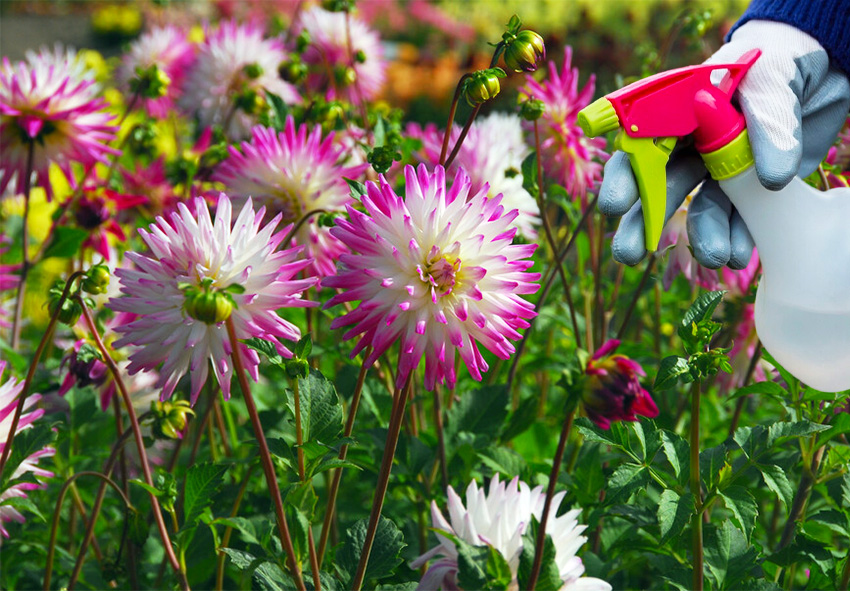
Cactus dahlias are beautiful and resilient, but like any plant, they can encounter issues that hinder their growth and blooming potential. Identifying and addressing these problems early ensures your dahlias remain healthy and vibrant throughout the growing season. The most common problems include poor blooming, yellowing leaves, and weak stems. These issues are often caused by improper care, such as incorrect watering, fertilizing, or planting conditions.
To address these concerns, it’s important to understand the root causes. For instance, if your dahlias aren’t blooming, it could be due to overfertilization with nitrogen-rich fertilizers, insufficient sunlight, or tubers planted too deep. Yellowing leaves often point to overwatering or poor drainage, while weak stems are typically a result of tall varieties needing support or pinching to encourage bushier growth.
By making simple adjustments like providing proper sunlight, improving soil drainage, reducing excessive fertilization, and supporting tall plants, you can prevent these issues. Additionally, regular maintenance, such as deadheading spent blooms and checking for pests, will help keep your cactus dahlias in optimal condition. With the right care, these issues can be easily fixed, allowing you to enjoy the stunning flowers and texture that cactus dahlias bring to your garden.
Troubleshooting Guide
This troubleshooting guide will help you address the most common problems that cactus dahlias encounter, such as blooming issues, yellowing leaves, and plant collapse. By understanding the causes of these problems and implementing the right solutions, you can keep your dahlias healthy and ensure they flourish in your garden.
Issue 1: Cactus Dahlias Not Blooming
Cause:
- There are several potential causes for your cactus dahlias failing to bloom. Overfertilization with high-nitrogen fertilizers can encourage lush foliage growth at the expense of flowers.
- Insufficient sunlight is another common reason, as dahlias require at least 6 hours of direct sunlight to flower properly. Additionally, if the tubers were planted too deep, the plants may struggle to bloom.
Solution:
- Reduce Nitrogen Fertilization: Excessive nitrogen can lead to an overabundance of leaves instead of flowers. Use a balanced fertilizer with lower nitrogen to promote blooming.
- Increase Sun Exposure: Make sure your dahlias are receiving enough sunlight, as this is essential for their blooming process.
- Adjust Planting Depth: Replant tubers at the correct depth, 4-6 inches deep with the eyes (growth points) facing upwards. Shallow planting encourages stronger growth and better flowering.
Issue 2: Yellowing Leaves or Weak Growth
Cause:
- Yellowing leaves or weak growth in cactus dahlias is often a sign of overwatering or poor soil drainage, which can lead to root rot. Another potential cause is a nutrient deficiency, especially if the soil lacks sufficient minerals or has a poor pH balance.
Solution:
- Improve Soil Drainage: Ensure your garden has well-draining soil. Adding compost or using raised beds can help water drain effectively, preventing root rot.
- Watering Practices: Water your dahlias deeply but infrequently, ensuring the soil is allowed to dry out slightly between waterings. This prevents the roots from becoming waterlogged.
- Apply a Balanced Fertilizer: Use a balanced, slow-release fertilizer to provide essential nutrients for your dahlias. Look for a formula with equal parts nitrogen, phosphorus, and potassium, and apply it during the growing season to support healthy foliage and growth.
Issue 3: Dahlias Falling Over
Cause:
- Tall cactus dahlias with large blooms are prone to toppling over due to their height and the weight of their flowers. This is particularly common if the plant doesn’t have adequate support. Without support, the stems may bend or break, especially in windy conditions.
Solution:
- Use Plant Stakes or Supports: Early in the growing season, insert stakes or cages around the dahlia plants to provide structure and prevent them from falling over as they grow taller.
- Pinch Back and Prune: Regularly pinch back the growing tips of your dahlias to promote bushier growth. Removing weak or leggy growth encourages stronger, sturdier stems that can better support the blooms.
- Remove Weak Shoots: Prune away any spindly or weak shoots that may contribute to the plant’s inability to stand tall. Focus on maintaining strong, healthy stems to hold the blooms upright.
Propagating Cactus Dahlias: Growing More Beautiful Blooms
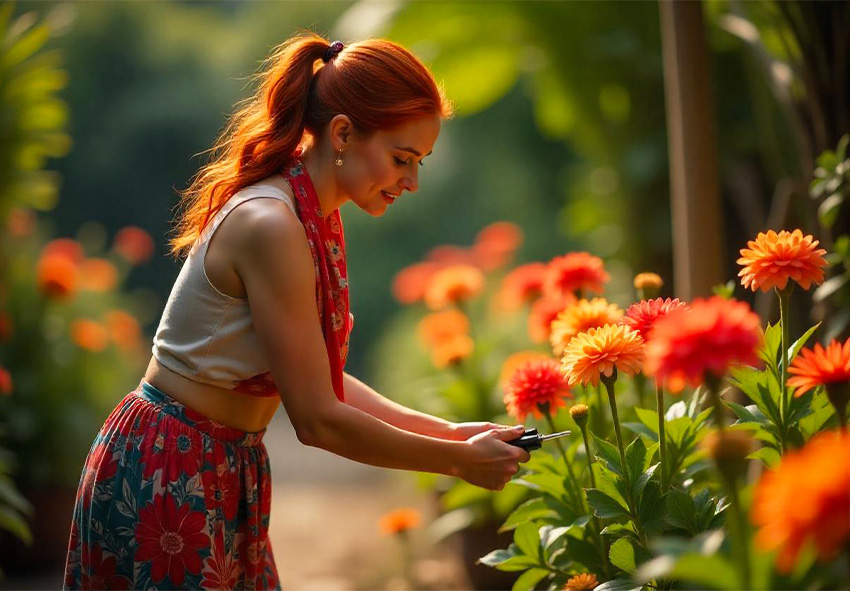
Propagating cactus dahlias allows you to expand your collection of these striking plants and enjoy even more vibrant blooms in your garden. There are two main methods for propagation: dividing tubers and taking cuttings. Dividing tubers is the most common and straightforward method, while rooting cuttings provides an alternative way to propagate your dahlias.
Both methods require careful timing and technique to ensure the best results. When propagating by division, it’s essential to choose healthy tubers and separate them carefully to avoid damage. On the other hand, growing from cuttings allows you to propagate the plant earlier in the season and can result in faster-growing plants.
Either method can be a rewarding way to produce new dahlia plants, ensuring your garden continues to bloom with beauty year after year. Keep in mind that successful propagation also requires attention to soil, watering, and sunlight, which will directly influence the growth and health of the new plants.
How to Propagate Cactus Dahlias Step-by-Step
Propagating cactus dahlias involves two primary methods: dividing tubers and growing from cuttings. Dividing tubers in late fall ensures healthy, new plants, while cuttings taken from new shoots in early spring offer an alternative route to propagation. Both methods require specific techniques for successful results.
Step 1: Dividing Dahlia Tubers (The Best Method)
Dividing cactus dahlia tubers is one of the most effective and widely used methods of propagation. The best time to divide dahlias is in late fall, after the first frost. This allows the plants to go into dormancy and ensures the tubers are ready for separation. Begin by carefully digging up the tubers from the ground. Once you have the tuber clump, gently separate the healthy sections, ensuring each piece has at least one eye, or growth point.
These eyes are critical for sprouting new growth in the coming season. Use a clean, sharp tool to make the divisions, being careful not to damage the tubers. After dividing, allow the tubers to dry out for a day or two in a cool, dry place before storing them for the winter or planting them again in spring. Proper care and attention during this process will increase the likelihood of successful propagation and strong new plants.
Step 2: Growing Cactus Dahlias from Cuttings
Growing cactus dahlias from cuttings is another excellent way to propagate these plants, especially if you’re looking to generate new growth early in the season. The ideal time to take cuttings is in early spring, just as new shoots begin to emerge. Select healthy, non-flowering shoots that are soft yet firm to the touch. Using a clean, sharp knife, cut a 4-6 inch piece from the shoot, making sure each cutting has at least one growth node. Remove the lower leaves, leaving a few at the top.
Place the cuttings in a small pot filled with moist, well-draining soil, ensuring that the node is buried beneath the surface. Keep the soil consistently moist but not soggy, and place the pots in a warm, bright location that receives indirect sunlight. After a few weeks, the cutting should develop roots. Once the cutting has established a strong root system, it can be transplanted into the garden or larger containers. Growing dahlias from cuttings is a great way to enjoy new plants quickly and efficiently.
Frequently Asked Questions (FAQs) about Cactus Dahlias
1. What makes Cactus Dahlias different from other dahlia types?
Cactus Dahlias are known for their dramatic, spiky petals that curl backward, giving the flowers a starburst or firework-like appearance. Unlike traditional rounded dahlias, their pointed petals create a bold, sculptural effect. They come in various sizes and vibrant colors, making them a favorite for eye-catching garden displays and floral arrangements. Their unique form adds texture and height to borders, and they’re especially striking when planted in groups.
2. Can I grow Cactus Dahlias indoors?
Cactus Dahlias can be grown indoors in large containers, but they need plenty of sunlight—at least 6 hours daily—and good airflow. Choose dwarf or compact varieties for indoor growth. Use well-draining soil and a large pot to accommodate tuber development. Regular watering and monthly feeding during the growing season are essential. Be sure to provide support for taller types, and move them outdoors during warm days if space allows.
3. How do I plant Cactus Dahlia tubers for best results?
Plant tubers in spring after the last frost, 4–6 inches deep with the eye facing up. Space them 18–24 inches apart in well-draining soil enriched with compost. Choose a sunny spot with at least 6 hours of sunlight per day. Water sparingly until shoots appear, then increase moisture. Adding a layer of mulch helps retain soil moisture and suppress weeds. Stake tall varieties early to support their heavy blooms.
4. How can I order Holland Cactus Dahlia bulbs from your online store?
Ordering Holland cactus dahlias from our online store Dutch-bulbs.com is simple and convenient. Visit our website and browse our selection of dahlia varieties, including those sourced from Holland for their exceptional quality and beauty. Once your order is confirmed, our team will carefully pack and ship your Holland cactus dahlia bulbs directly to your doorstep, ensuring they arrive fresh and ready for planting.
5. How do I overwinter Cactus Dahlia tubers?
In colder zones (below USDA Zone 8), dig up tubers after the first frost blackens the foliage. Gently brush off soil and let them dry for a few days in a cool, dark place. Store in a box filled with dry peat moss, sand, or sawdust, keeping temperatures around 40–50°F. Check periodically for rot or mold. In warmer climates, you can leave tubers in the ground with a thick layer of mulch.
Published: 10.04.2025
